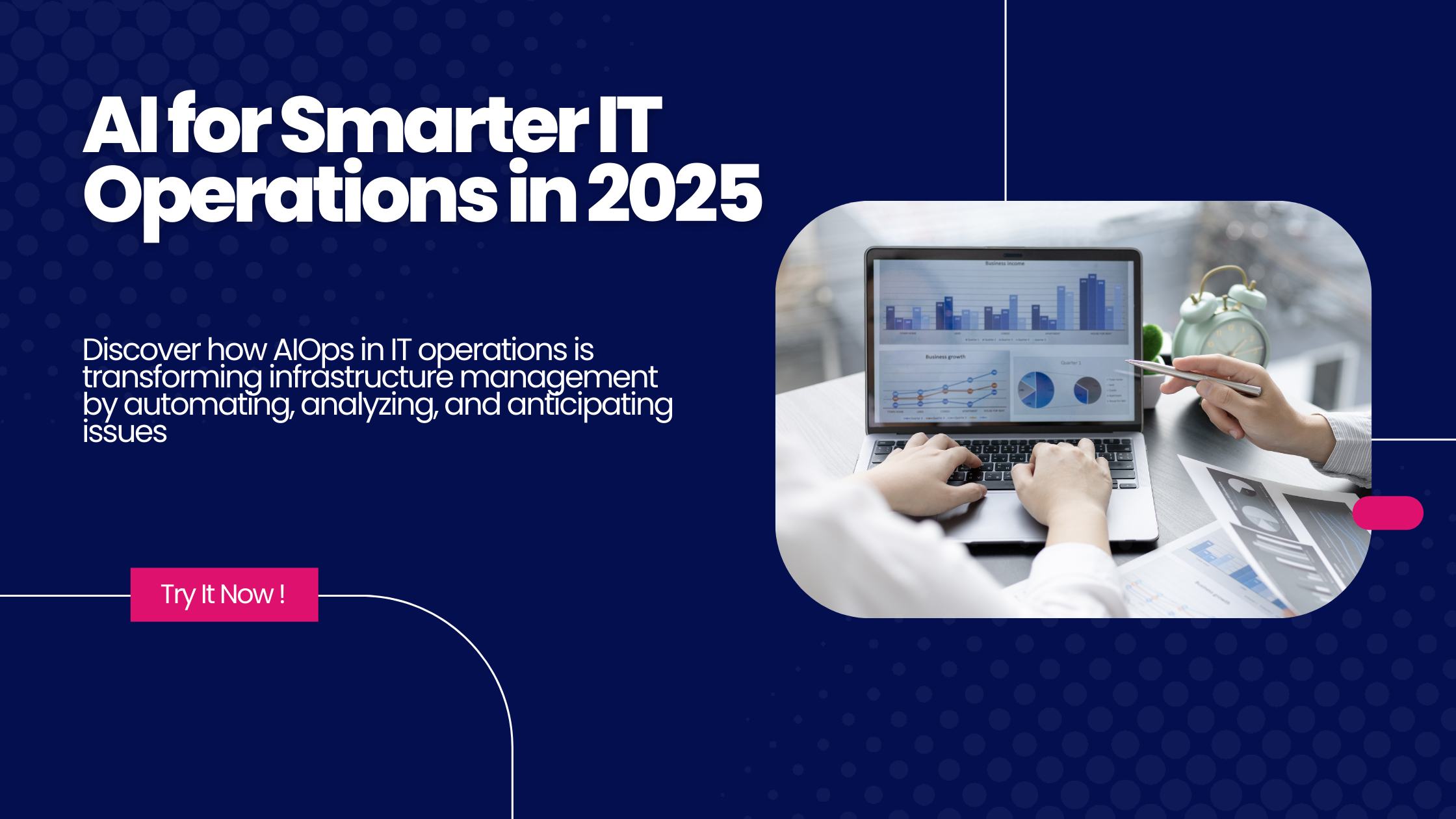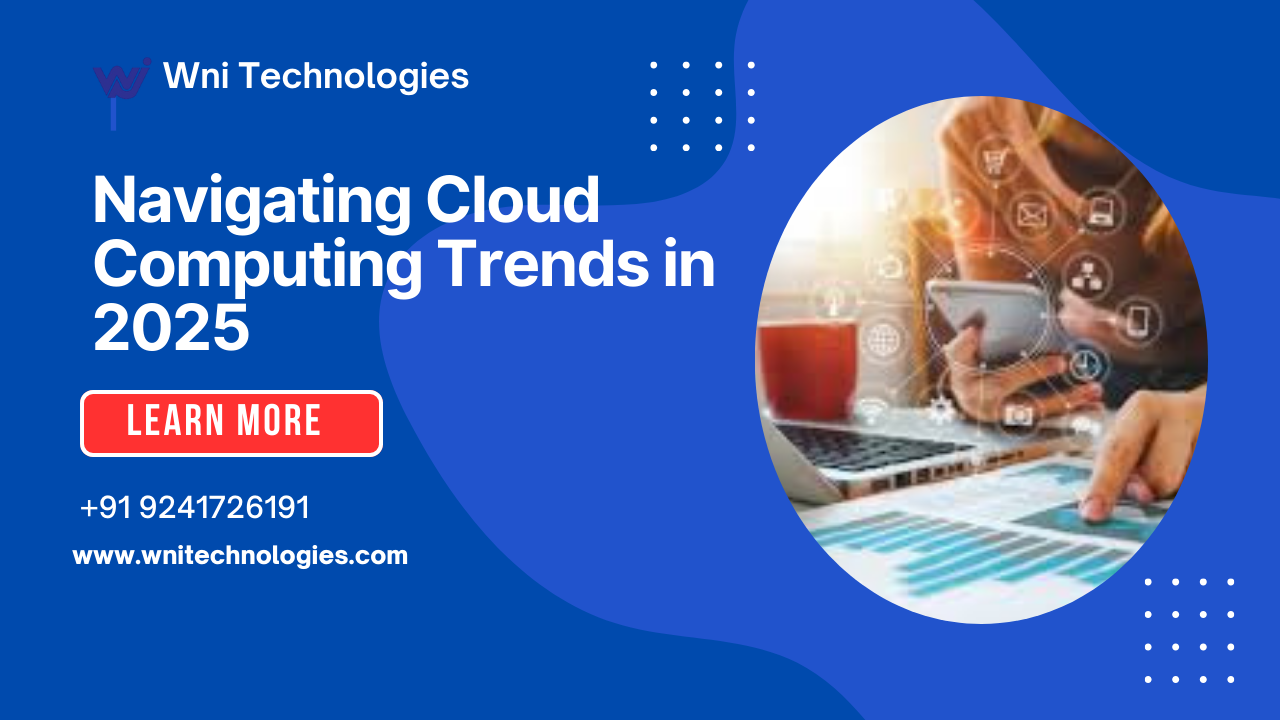
AIOps: AI for Smarter IT Operations in 2025
Introduction
The IT operations landscape is changing in a seismic manner, propelled by demands for increased agility, velocity, and resiliency. With digital ecosystems becoming increasingly sophisticated, old-school monitoring and manual management no longer cuts it. Step in AIOps (Artificial Intelligence for IT Operations) — a revolutionary method with AI and machine learning to automate, optimize, and simplify IT operations.
In this blog, we’ll explore how AIOps in IT operations is reshaping infrastructure management in 2025, the tools enabling this transformation, and how businesses can adopt AIOps to improve service uptime, reduce downtime, and boost operational efficiency.
What Is AIOps?
AIOps is a plan that harmonizes machine learning and artificial intelligence with IT operations to automate data management, identify anomalies, forecast problems, and automate root cause analysis. Rather than waiting for issues to arise and reacting to them, AIOps makes it possible for teams to prevent disruptions proactively
Why AIOps Is Important in 2025
As cloud-native architectures, containerization, microservices, and hybrid environments became mainstream, IT infrastructure management has become more complicated than ever. Here’s why AIOps has become so important:
- Real-time monitoring across environments
- Decreased mean time to resolution (MTTR)
- Improved resource optimization
- Improved user experiences
- Scalable solutions for expanding data volumes
Primary Advantages of AIOps in IT Operations
- Predictive Incident Management
AIOps foretells probable issues based on behavioral analytics, enabling IT teams to correct issues prior to influencing end-users.
- Automated Repetitive Tasks
Repetitive tasks like ticket classification, log examination, and system alarms are automated, eliminating human blunders and providing time for innovation.
- Consolidated Data Visibility
AIOps consolidates information from various sources such as monitoring software, logs, and events into a central dashboard for end-to-end visibility.
- Smart Alerting
Rather than overwhelming teams with alerts, AIOps weeds out noise and surfaces key anomalies that need human attention.
- Accelerated Root Cause Analysis
Machine learning algorithms assist in determining root causes of failures quicker than conventional approaches, reducing service downtime
Applications of AIOps in the Real World
✅ E-commerce Websites
AIOps provides uptime through traffic surges by anticipating system stress and scaling resources automatically.
✅ Financial Institutions
With fraud detection in real-time and remediation through automation, AIOps enhances security and compliance.
✅ Healthcare IT
AIOps delivers steady service through continuous monitoring of interdependent systems and notification of IT personnel regarding service performance problems.
Best Practices for Implementing AIOps in IT Operations
- Define Clear Use Cases
Begin with concrete pain points—alert fatigue, latency, or data silos—and match AIOps deployment to solve them.
- Integrate Across the Stack
Make sure your AIOps platform is able to integrate with current monitoring tools, DevOps pipelines, and cloud services.
- Ensure High-Quality Data
AI models are only as good as the training data. Keep clean, accurate, and relevant datasets for optimal results.
- Enable Collaboration
AIOps is not an IT only issue. Involve DevOps, security, and business stakeholders in the discussion to align objectives.
- Feedback and Continuous Learning
As infrastructure changes, so should your AIOps plan. Train models continuously with new data and user feedback.
Best AIOps Tools to Watch in 2025
- Dynatrace
- Splunk ITSI
- Moogsoft
- BigPanda
- New Relic AI
- Datadog
- PagerDuty AIOps
- IBM Watson AIOps
- OpsRamp
- Elastic Observability
These platforms provide different degrees of automation, anomaly detection, and integrations suited to various business sizes and requirements.
Challenges in Implementing AIOps
- Initial Complexity: Integrating AI-based tools can be a time-consuming process.
- Cultural Resistance: Groups used to conventional IT can be resistant to change.
- Data Overload: Unfiltered, enormous data sets can cloud instead of clarify.
- Trust in Automation: Certain organizations are slow to permit AI to execute decisions on its own.
Mitigating these challenges involves effective change management, training, and vendor selection
Future of AIOps in IT Operations
By 2025 and thereafter, AIOps will not be a trend anymore—it will be mandatory. As generative AI, predictive maintenance, and self-healing systems continue to advance, companies will become more dependent on AIOps for:
- Zero-touch operations
- Predictive capacity planning
- Real-time DevSecOps collaboration
- Voice-driven monitoring commands
Get ready to witness AIOps deeply embedded within cloud-native platforms and even applied in edge computing cases.
Conclusion
AIOps in IT operations is no longer a nice-to-have upgrade, it’s a critical approach to dealing with the complexity of today’s infrastructure. Through automation of repetitive tasks, anticipating problems before they become critical, and delivering actionable insights, AIOps enables teams to move faster, act smarter, and operate more efficiently.



